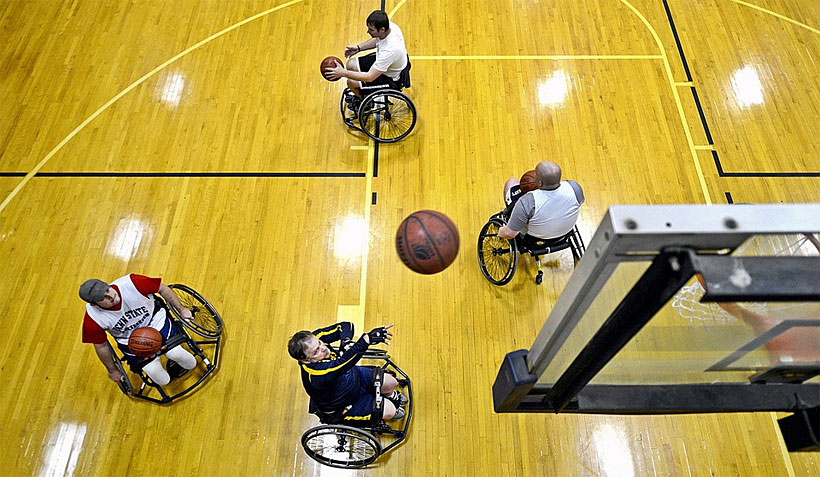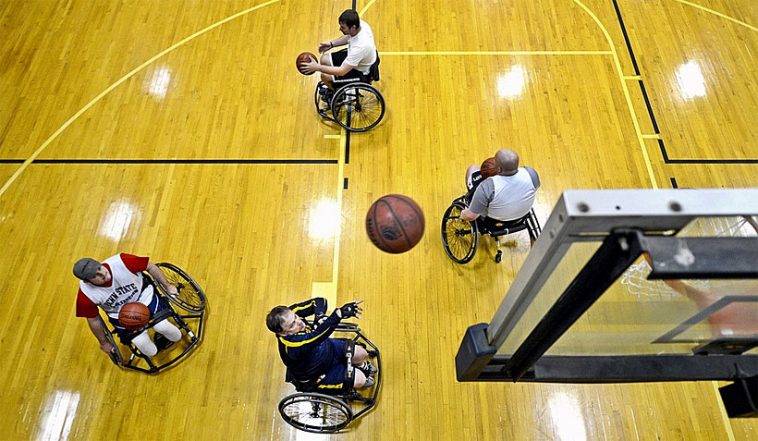- Like
- SHARE
- Digg
- Del
- Tumblr
- VKontakte
- Flattr
- Buffer
- Love This
- Save
- Odnoklassniki
- Meneame
- Blogger
- Amazon
- Yahoo Mail
- Gmail
- AOL
- Newsvine
- HackerNews
- Evernote
- MySpace
- Mail.ru
- Viadeo
- Line
- Comments
- Yummly
- SMS
- Viber
- Telegram
- JOIN
- Skype
- Facebook Messenger
- Kakao
- LiveJournal
- Yammer
- Edgar
- Fintel
- Mix
- Instapaper
- Copy Link

Staying fit while living with a disability that limits you to a wheelchair may seem impractical or impossible. The truth is, however, that close to 40 million people in the U.S. live with some form of disability and many of the millions who use a wheelchair or other mobility aid still find fun and effective ways to workout every day. With the right equipment, guidance, and attitude, wheelchair users can be on their way to a sweat-breaking, heart-pounding fitness session in no time.
Importance of with Wheelchair Fitness
Everything from a disease, like multiple sclerosis, to an injury, like paralysis, can land someone in a wheelchair, either temporarily or for a more extended period of time. People with disabilities can utilize mobility aids like wheelchairs to encourage independence, simplify the process of getting around, and maintain a high quality of life.
Not being able to walk or run, however, can have a negative impact on overall health and potentially lead to weight gain and increased risk for obesity, heart disease, and other life-threatening conditions. That’s why wheelchair fitness plays such a critical role in health outcomes and the well-being of people with disabilities. Not only does routine exercise help to burn calories, it also promotes body awareness, builds strength, and bolsters confidence.
Getting Started with Wheelchair Fitness
When it comes to launching a new exercise routine from your wheelchair, one of the first places to start is with a conversation with your doctor, specialist, or physical therapist. What limitations do you need to keep in mind? Are there certain musculoskeletal risks to consider when deciding what type of exercise you want to do?
Start a dialogue and discuss the different types of wheelchair fitness you are interested in as well as where and how long you should plan to do them, i.e. at the gym vs. at home.
Wheelchairs and Adaptive Equipment
A 2017 clinical commentary published in the African Journal of Disability reported that while regular physical fitness is encouraged for wheelchair users, risk for injury does increase when a wheelchair is not properly setup for exercise. Wheelchair users typically engage in upper limb exercises which are beneficial, but research shows that incorrect chair setup can quickly lead to poor wheelchair propulsion and ensuing neuromuscular upper limb injuries.
Experts recommend that wheelchair users consult knowledgeable instructors like biokineticists or physiotherapists who can evaluate the wheelchair set up prior to intense physical activity.
In addition to the wheelchair itself, fitness equipment should be reviewed and modified as needed to ensure safe workouts for wheelchair users. Many commercial gyms will offer adaptive equipment that is designed specifically for people in seated positions using wheelchairs, but people with disabilities can also look for local equipment lending programs and dedicated wheelchair-friendly fitness centers in their region. The National Center on Health, Physical Activity and Disability (NCHPAD) offers an online directory where people with disabilities can search for fitness resources near them.
Exercises for Wheelchair Users
The best news is that fitness programs for wheelchair users are not limited to a handful of arm exercises. Check with your local gym or simply look online for free tutorial videos and you will find a range of wheelchair workout ideas including:
- Wheelchair yoga and tai chi
- Wheelchair aerobics and cardio workouts
- HIIT (High-intensity interval training) for wheelchair users
- Adaptive sports (including horseback riding, basketball, skiing, biking, and kayaking)
- Table games (like shuffleboard or ping pong)
Wheelchair Exercise Workout Tips
Before you get into your workout groove, don’t forget basic workout tips including:
Warming Up
Launching right into a workout without any warming up or stretching is a recipe for disaster. Instead, loosen muscles and joints up prior to exercising with simple arm circles, shoulder and neck rolls, and back stretches.
Staying Hydrated
While you might not feel like you are going to break too much of a sweat, you would be surprised. Consume plenty of fluids prior, during, and after a workout and fuel your recovery with healthy amounts of proteins (think Greek yogurt, lean chicken, peanut butter protein shakes, etc)
Bringing a Friend
Working out and playing sports is always more fun with friendly company, plus having a workout buddy by your side can mean greater safety and extra help with equipment.
Utilize Assistive Tools
Don’t forget wheelchair accessories like foot pedals, leg lifter straps, and seat belts that can help you assume a stronger, safer position for certain exercises and reduce your risk of injury.
Call Ahead of Time
Don’t assume that your local gym is going to have adaptive equipment much less a wheelchair ramp so you can enter the building. Call ahead of time to find out what resources are available and how accessible the entrance, bathrooms, and locker rooms are for wheelchair users too.
In Conclusion
Being disabled and confined to a wheelchair doesn’t mean you still can’t stay fit and enjoy your beautiful life. We hope the tips here help you to incorporate a regular exercise routine into your daily life, that’s if you haven’t already done so of course!

